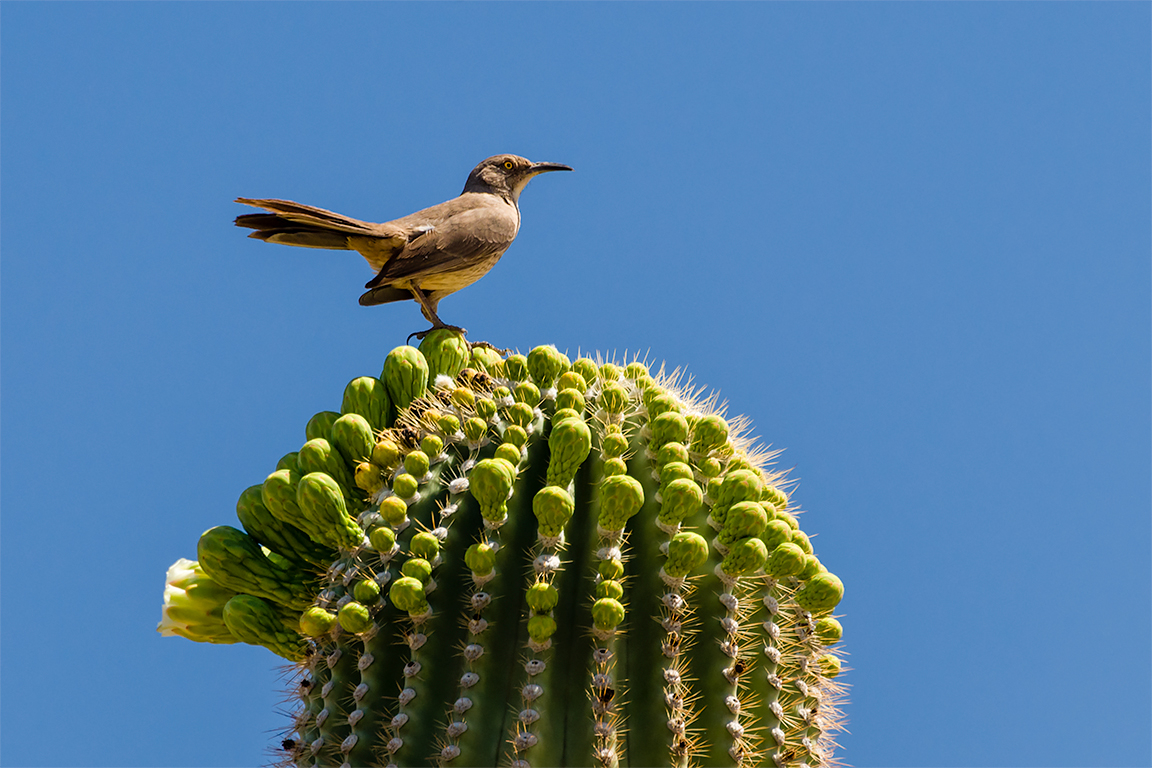Desert Botanical Garden, Part 4
Here we see the sunny side of the blooms topping a Saguaro cactus — just waiting for pollinators to arrive to do their job.

 I found the sign naming this tree — an Ironwood tree. My mind raced — this could not be correct — I am familiar with Ironwood trees from Australia that have been planted in Hawai‘i to act as a wind break. They look nothing like this tree.
I found the sign naming this tree — an Ironwood tree. My mind raced — this could not be correct — I am familiar with Ironwood trees from Australia that have been planted in Hawai‘i to act as a wind break. They look nothing like this tree.
So I looked in Wikipedia and it turns out there are at least 30 different species of trees called "Ironwood". This one is a Desert Ironwood — the ones in Hawai‘i are known as Australian Pine, Beach Sheoak or Common Ironwood.
 Next up is a stand of Lupine. Most of us recognize them as a wildflower but, in fact, they were cultivated by the Romans for their beans which were a popular food. Further back, they were also grown by the native peoples of the Andean highlands and used in much the same way as soybeans are today.
Next up is a stand of Lupine. Most of us recognize them as a wildflower but, in fact, they were cultivated by the Romans for their beans which were a popular food. Further back, they were also grown by the native peoples of the Andean highlands and used in much the same way as soybeans are today.
 Too beautiful not to photograph — another flowering Prickly Pear cactus.
Too beautiful not to photograph — another flowering Prickly Pear cactus.
 And another stand of Desert Sunflowers with a few its friends jumping into the photo.
And another stand of Desert Sunflowers with a few its friends jumping into the photo.
 This interesting flower is a Yellow Columbine. It makes me think of small jellyfish floating around one another.
This interesting flower is a Yellow Columbine. It makes me think of small jellyfish floating around one another.
 A closer shot of Lantana. So colorful!
A closer shot of Lantana. So colorful!
 These are the flowers of a Desert Willow tree. It is native to the Sonoran Desert and adjacent areas. Despite its name, it is not related to the true Willow tree. The flowers attract hummingbirds and the seeds are eaten by wildlife.
These are the flowers of a Desert Willow tree. It is native to the Sonoran Desert and adjacent areas. Despite its name, it is not related to the true Willow tree. The flowers attract hummingbirds and the seeds are eaten by wildlife.
 Wow, mixed in with the wildflowers is still another Red Prickly Pear flower — yellow this time. Lovely!
Wow, mixed in with the wildflowers is still another Red Prickly Pear flower — yellow this time. Lovely!
I was lucky to catch this Curved Bill Thrasher sitting atop a flowering Saguaro. Native to the Southwestern U.S. and Mexico, it is referred to as the default desert bird since it does not migrate. According to Wikipedia, "The demeanor of the curve-billed has been described as 'shy and rather wild', but it allows humans to view it closely. It is very aggressive in driving out potential threats, whether competitors for food or predators of its chicks."
